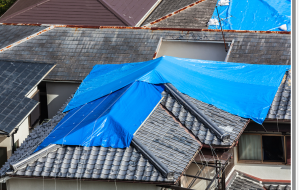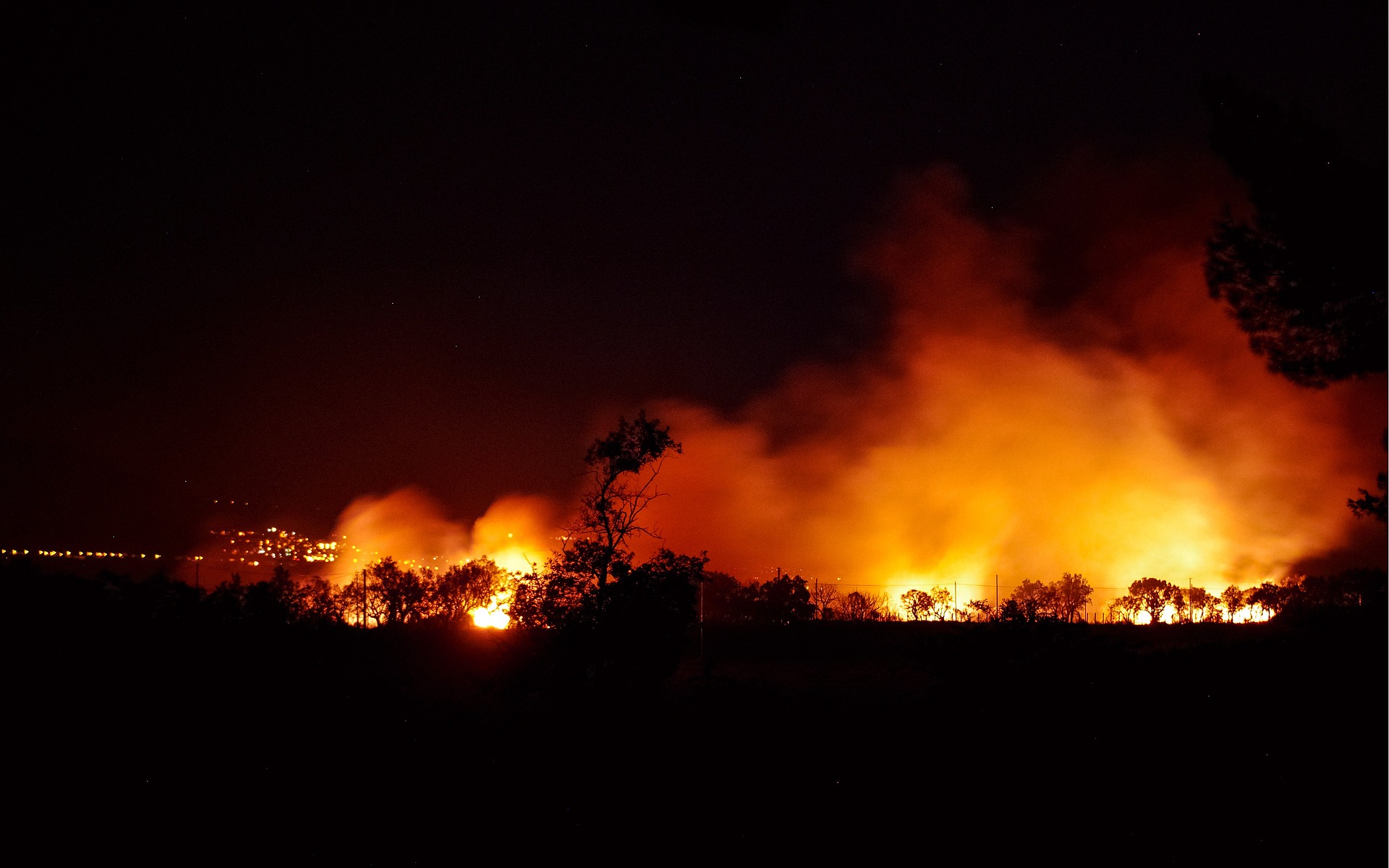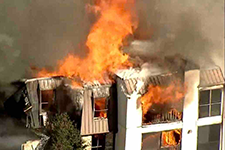 *New Case Law
*New Case Law
A recent appellate court decision, 11640 Woodbridge Condominium Homeowners Association v. Farmers Insurance Exchange (2025) 110 Cal.App.5th 211, marks an important development in HOA law and insurance policy interpretation. The Woodbridge case clarifies how “all risk” (or “open peril”) policies are applied during major construction repair projects. The case stands as a warning that broadly worded exclusions in these policies are not a “free pass” for insurers to deny coverage.
Case Overview
In Woodbridge, the Association sustained more than $3.5 million in water damage when storms struck during an ongoing reroofing project. The Association’s insurance carrier denied coverage, and the Association sued for breach of contract and breach of the implied covenant of good faith and fair dealing. The trial court granted summary judgment in favor of the insurer, but the Court of Appeal reversed. The appellate court found triable issues of fact on both claims and suggested that the insurer’s conduct could rise to the level of bad faith and potentially justify punitive damages.
What This Means for HOA Boards and Managers
- Coverage Can Exist Even During Repair Projects
The Woodbridge decision confirms that coverage can remain intact during in-progress construction, even when structural elements are dismantled. In Woodbridge, the carrier argued that the structure no longer had a “roof” once portions were removed. The Court disagreed, pointing to the policy’s definition of covered property, which expressly included “repairs and alterations.”
Takeaway: HOAs should not assume they are uninsured during construction. Many policies, including the policy in Woodbridge, cover structures under repair. Claims should not be abandoned without a thorough policy review. When in doubt, legal counsel should be consulted early.
- Broad Exclusions Will Be Interpreted Narrowly
The insurance company relied upon broad exclusions in the “all risk” policy to justify its decision to deny coverage, relying specifically on the ‘water damage’ and ‘faulty workmanship’ exclusions to support its denial. The Court emphasized that exclusions are interpreted narrowly against insurers to protect the reasonable expectations of policy holders.
Takeaway: An insurance carrier’s reliance on broad, vaguely worded exclusions will be closely scrutinized and, where ambiguous, resolved in favor of the insured. When faced with a claim denial, Associations should press for a clear, documented rationale and, with the help of legal counsel, push back against unjustified denials.
- Negligence Alone Doesn’t Automatically Bar Coverage
In Woodbridge, the carrier argued that the loss was entirely due to the contractor’s negligence. The Court rejected this, noting the insurer failed to demonstrate that the damage would have been avoided if the contractor had followed industry standards. The carrier did not establish that, but for the negligent work, no rain would have entered the HOA’s property.
Takeaway: In short, negligence, without a showing that it contributed to or caused the damage, may not void coverage. If “faulty workmanship” is cited as a reason for denial, consider whether other contributing causes, such as weather, are present.
- Denial of Coverage Can Trigger Bad Faith and Punitive Damages Exposure
The Court found that Farmer’s denial, based on questionable policy interpretations, exposed it to bad faith and punitive damages liability. Insurers must treat their insured’s interest with equal consideration and investigate claims thoroughly.
Takeaway: If an insurer issues a sweeping denial, fails to investigate, or prioritizes cost savings over coverage obligations, the Association may have remedies beyond mere coverage.
| The Woodbridge decision reinforces that insurance coverage during major repair projects is not as fragile as some insurers suggest. For homeowners association boards and managers, it’s a reminder to read policies closely, push back on overbroad denials, and recognize that even allegations of negligence may not be the end of a claim. Boards and managers are advised to secure proper coverage before construction begins, document protective measures taken during the project, such as tarping and site inspection, and seek legal guidance at the first sign of a dispute. |
 HOA Lawyer Blog
HOA Lawyer Blog


 Homeowners Associations (“HOAs”) rely on the efforts of their volunteer directors, officers, and
Homeowners Associations (“HOAs”) rely on the efforts of their volunteer directors, officers, and  If your homeowners association (“HOA”) is located in a high-risk fire area, what can your Board of Directors do if the current master policy of fire and casualty insurance on your condominium or townhome buildings is not renewed? Due to the massive wildfires that have swept California over the past two years, many insurance companies (and their re-insurance partners) are reassessing their willingness to underwrite fire and casualty insurance in the state. Those carriers that are willing to write coverage are limiting their risk exposure by greatly reducing the coverage limits available for purchase. To compound this problem, the premiums being quoted are 5-10 times the amount of the prior year’s premium for much less coverage.
If your homeowners association (“HOA”) is located in a high-risk fire area, what can your Board of Directors do if the current master policy of fire and casualty insurance on your condominium or townhome buildings is not renewed? Due to the massive wildfires that have swept California over the past two years, many insurance companies (and their re-insurance partners) are reassessing their willingness to underwrite fire and casualty insurance in the state. Those carriers that are willing to write coverage are limiting their risk exposure by greatly reducing the coverage limits available for purchase. To compound this problem, the premiums being quoted are 5-10 times the amount of the prior year’s premium for much less coverage. Asked – Our insurance was cancelled and with the new policy the premium sky rocketed. There is not enough money in the operating account or budget to pay for the new premium. Can we pay from reserves?
Asked – Our insurance was cancelled and with the new policy the premium sky rocketed. There is not enough money in the operating account or budget to pay for the new premium. Can we pay from reserves?  Homeowners Associations (“HOA”) are encouraged to report potential and actual claims to their insurance carriers. In fact, there is usually a provision within the HOA’s
Homeowners Associations (“HOA”) are encouraged to report potential and actual claims to their insurance carriers. In fact, there is usually a provision within the HOA’s 
 When there is a potential for litigation regarding property damage, your association’s legal counsel will sit down with the Board of Directors to analyze whether the alleged property damage resulted from the association’s negligence in any form. If the association is put on notice of a potential negligence claim, it is advisable to immediately report the matter to your Commercial General Liability (“CGL”) insurance carrier.
When there is a potential for litigation regarding property damage, your association’s legal counsel will sit down with the Board of Directors to analyze whether the alleged property damage resulted from the association’s negligence in any form. If the association is put on notice of a potential negligence claim, it is advisable to immediately report the matter to your Commercial General Liability (“CGL”) insurance carrier. *New Case Law
*New Case Law Community associations buy insurance to obtain coverage in the case it becomes necessary. The reality is pre-litigation costs are expensive, ranging anywhere from a few thousand to tens of thousands of dollars. Litigation itself can be even more and this is not including any estimated fees for an appeal. No association wants to pay out of pocket for all these fees when there is a perfectly good insurance policy bought just for these types of situations. However, sometimes, an insurance company will want to cut corners to avoid paying out its policy coverage amount. If an association’s insurance carrier(s) denies coverage, your association’s legal counsel will work together with the insurance adjuster to persuade the insurance carrier to provide coverage, as a bad faith insurance claim would not be beneficial to either parties.
Community associations buy insurance to obtain coverage in the case it becomes necessary. The reality is pre-litigation costs are expensive, ranging anywhere from a few thousand to tens of thousands of dollars. Litigation itself can be even more and this is not including any estimated fees for an appeal. No association wants to pay out of pocket for all these fees when there is a perfectly good insurance policy bought just for these types of situations. However, sometimes, an insurance company will want to cut corners to avoid paying out its policy coverage amount. If an association’s insurance carrier(s) denies coverage, your association’s legal counsel will work together with the insurance adjuster to persuade the insurance carrier to provide coverage, as a bad faith insurance claim would not be beneficial to either parties. Both Commercial and Residential Condominium CC&Rs frequently contain insurance language requiring the Association to obtain hazard (fire) insurance and prohibiting Owners from obtaining such coverage. Condominium Owners on the other hand are limited to obtaining liability insurance. Similar language was found in the CC&Rs of the condominium association in
Both Commercial and Residential Condominium CC&Rs frequently contain insurance language requiring the Association to obtain hazard (fire) insurance and prohibiting Owners from obtaining such coverage. Condominium Owners on the other hand are limited to obtaining liability insurance. Similar language was found in the CC&Rs of the condominium association in